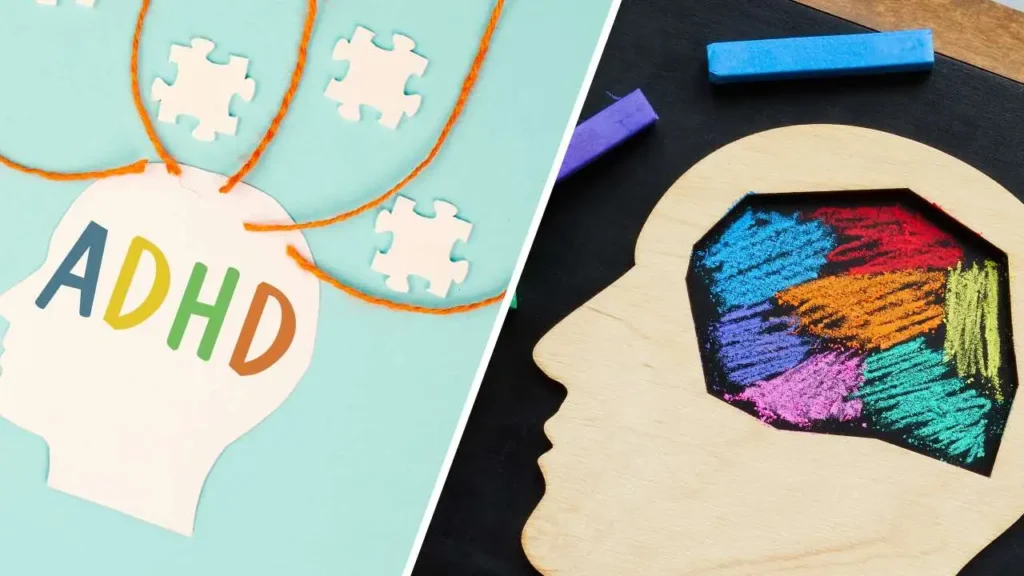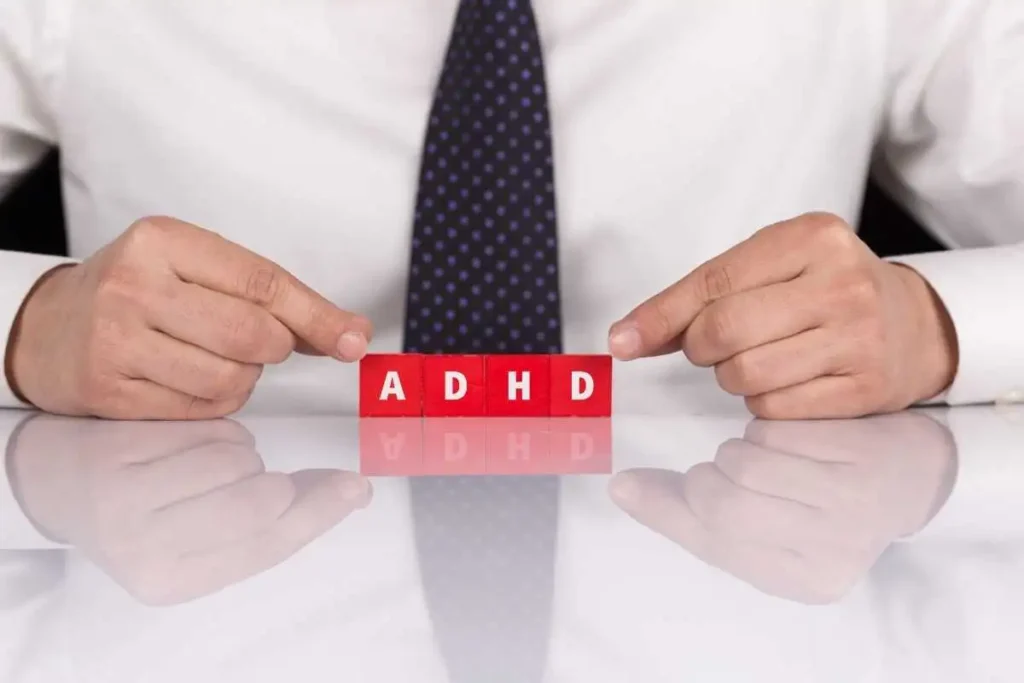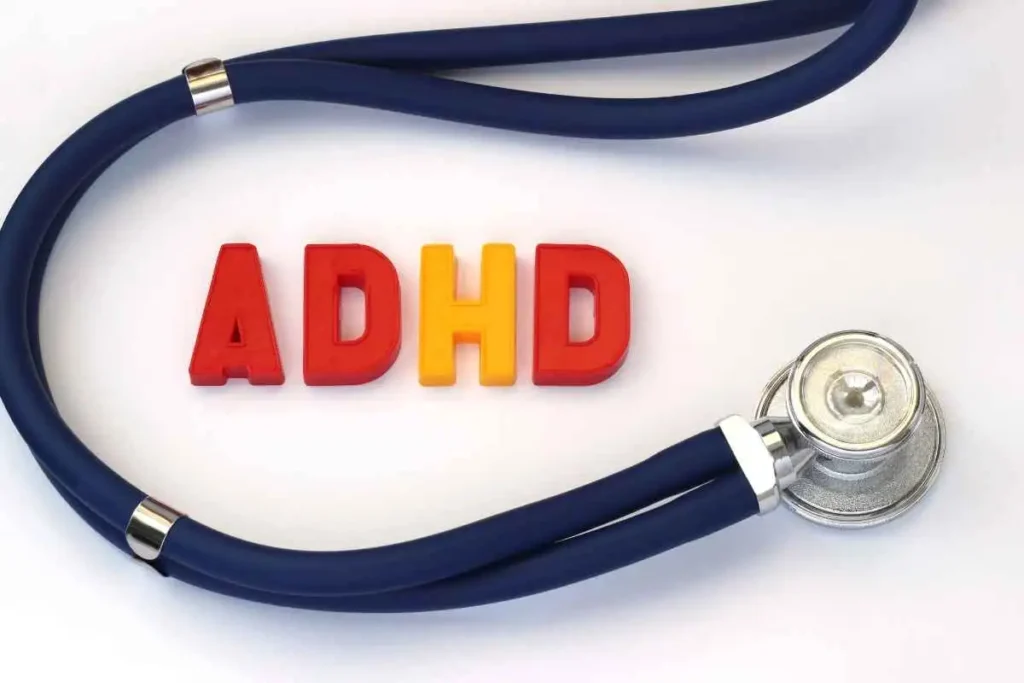Attention Deficit Hyperactivity Disorder (ADHD) and Autism Spectrum Disorder (ASD) are two neurodevelopmental conditions that affect millions worldwide. In fact, studies suggest that approximately 1 in 54 children are diagnosed with autism, while ADHD affects around 5% of the global population.
1. Shared Challenges with Social Interactions
Difficulty in Social Cues
Individuals with both ADHD and autism often face significant challenges interpreting social cues. This can lead to misunderstandings in social situations.
For instance, someone may miss nonverbal signals like facial expressions or body language, making social interactions feel confusing and overwhelming.
Struggles with Communication
Communication can be a hurdle for those with ADHD and autism. While some may find it hard to initiate conversations, others struggle to maintain them.
As Dr. Emily Johnson, a clinical psychologist, states, “Many individuals with ADHD and autism have unique communication styles that can lead to frustration for both themselves and their peers.” This difficulty often results in feelings of isolation.
Understanding these shared challenges is vital. It fosters greater empathy and awareness, paving the way for supportive environments.
Recognizing that these struggles exist can help both individuals and their loved ones navigate the complexities of social interactions.
2. Attention and Focus Issues
One of the prominent similarities between ADHD and autism is the challenge of maintaining focus. Individuals with ADHD often find it hard to concentrate on tasks for extended periods.
Similarly, those on the autism spectrum may struggle with attention, particularly when a task does not align with their interests. This shared difficulty can lead to frustration in both academic and daily settings.
Both groups tend to be easily distracted. For instance, a sudden noise or a visual stimulus can divert their attention away from what they are doing.
A recent study found that approximately 70% of children with autism and 90% of children with ADHD report significant issues with attention. These statistics highlight the prevalence of attention challenges, emphasizing the need for tailored strategies to support their focus.
By recognizing the similarities, families, educators, and peers can foster more supportive environments that cater to the unique needs of individuals with ADHD and autism.
3. Sensory Sensitivities
Another significant similarity between ADHD and autism lies in the realm of sensory sensitivities. Individuals with both conditions often experience an overreaction to sensory input.
This can manifest in various ways, such as becoming overwhelmed by bright lights, loud noises, or certain textures.
Common sensory triggers include:
- Bright or flashing lights
- Loud sounds, like sirens or crowded spaces
- Strong smells, such as perfumes or food
- Textural discomfort from clothing or materials
- Touch sensations, like unexpected hugs or light touches
These triggers can lead to significant distress, impacting daily life. To illustrate these reactions, consider the following table comparing sensory reactions in ADHD and autism:
| Reaction | ADHD | Autism |
|---|---|---|
| Overstimulation | Often leads to distraction | Can result in meltdowns |
| Seeking sensory input | May crave movement | Enjoys specific textures |
4. Emotional Regulation Challenges
Emotional regulation can be a significant challenge for both individuals with ADHD and autism. Many struggle with handling emotions, leading to intense feelings that can feel overwhelming.
For instance, a child with ADHD may become frustrated over a simple mistake, while a child with autism might feel extreme anxiety in a new situation.
These difficulties can often result in outbursts and meltdowns. An individual might suddenly cry, shout, or even exhibit physical reactions when emotions are too much to manage.
As one parent shared, “Watching my son navigate his emotions is heartbreaking; it’s like a storm he can’t escape from.” This statement highlights the intense struggle many face.
Recognizing these emotional challenges is essential for fostering understanding and support. Providing a safe space for expression and developing coping strategies can make a significant difference in their daily lives. By acknowledging these similarities, we pave the way for better connections and support systems.
5. Need for Routine
Both individuals with ADHD and autism often show a strong preference for structured environments.
Routines provide a sense of stability and predictability, which can greatly help in managing their symptoms. For many, having a clear plan for the day reduces anxiety and enhances their ability to function effectively.
When routines are disrupted, it can lead to significant anxiety with change. A sudden alteration in plans or unexpected events may cause distress, making them feel overwhelmed.
Research indicates that about 70% of individuals with autism and ADHD benefit from structured routines in therapeutic settings. This highlights the importance of consistency in their daily lives.
Establishing a routine can also ease transitions between activities, providing a smoother flow throughout the day. Parents and caregivers can implement visual schedules or timers to help individuals anticipate changes.
6. Learning Difficulties
Individuals with ADHD and autism often exhibit unique learning styles that differ significantly from traditional approaches.
While some may excel in hands-on experiences, others might thrive in visual or auditory learning environments. Understanding these differences is crucial for effective education.
In traditional education settings, both groups can face substantial challenges. Standardized teaching methods may not cater to their specific needs, leading to frustration and disengagement. In fact, many children with ADHD or autism struggle to keep up with the pace of a conventional classroom.
| Learning Preference | ADHD | Autism |
|---|---|---|
| Visual Learning | Often preferred | Highly preferred |
| Auditory Learning | Can be distracting | May struggle to process |
| Hands-On Learning | Engaging | Highly engaging |
These insights reveal the necessity for tailored educational strategies. By recognizing and adapting to their learning preferences, educators can create a more inclusive and supportive environment.
7. Hyperfocus Phenomenon
One intriguing similarity between ADHD and autism is the hyperfocus phenomenon. This trait allows individuals to concentrate intensely on interests or activities that captivate them.
While many people can become engrossed in projects, those with ADHD or autism often take this to another level.
“Hyperfocus can lead to remarkable achievements, turning passions into skills.”
When engaged in something they love, individuals may lose track of time and become oblivious to their surroundings. This intense focus can be a double-edged sword—it fosters deep skill development in areas of interest but can also result in neglecting other responsibilities.
For instance, a child with autism might spend hours mastering a musical instrument, while a teenager with ADHD could dive deep into video game design.
In both cases, their unique ability to hyperfocus can transform hobbies into valuable skills. Recognizing this potential is essential for nurturing their interests and encouraging growth.
8. Impulsive Behaviors
Impulsivity is a significant challenge for both individuals with ADHD and autism. People with these conditions often act without thinking about the consequences.
This can manifest in various ways, such as blurting out answers in class or making hasty decisions without considering the outcome.
For example, a child with ADHD might impulsively grab a toy from a friend without asking. Similarly, a teenager with autism might interrupt conversations, not realizing the social implications. These actions can lead to misunderstandings and social difficulties.
Statistics reveal that approximately 70% of children with ADHD exhibit impulsive behaviors, which can hinder their ability to delay gratification. This difficulty in waiting for rewards amplifies the challenge. For instance, a person might choose to eat dessert immediately instead of saving it for later.
9. Repetitive Behaviors
Both ADHD and autism can present with repetitive behaviors, which may include actions or speech that are repeated frequently.
Individuals might engage in repetitive movements, such as hand-flapping or rocking, or they may repeat certain phrases or sounds. These behaviors often serve as a coping mechanism, providing comfort in an unpredictable world.
A therapist notes, “For many individuals, repetition is a way to manage anxiety and create a sense of control. It can be soothing and familiar, especially in stressful situations.” This need for repetition can be seen in various contexts, such as a child with autism who insists on following the same routine every day.
In ADHD, while repetitive behaviors may not be as pronounced, some individuals might fixate on specific interests, discussing them over and over.
10. Executive Function Challenges
Executive function is crucial for managing daily tasks and responsibilities. Both ADHD and autism can lead to significant difficulties with planning and organization.
Individuals may struggle to keep track of tasks, prioritize activities, or follow through with plans. This can create a domino effect, impacting various aspects of their lives.
For example, a child with ADHD might forget to turn in homework or have trouble managing time effectively. Similarly, a child with autism might find it challenging to organize their belongings or follow a daily schedule. These challenges can hinder their ability to thrive in both academic and social settings.
Here’s a quick comparison of how executive function challenges manifest in ADHD and autism:
| Challenge | ADHD | Autism |
|---|---|---|
| Planning | Often forgets tasks | Struggles with structured plans |
| Organization | Disorganized belongings | Difficulty with routines |
| Time Management | Impulsive decisions | Rigid adherence to schedules |
These executive function challenges can significantly impact daily activities, leading to frustration and stress for both individuals and their families. Understanding these similarities is essential for providing the right support.
11. Social Anxiety
Social anxiety is a significant concern for many individuals with ADHD and autism. The fear of social situations can be overwhelming, leading to feelings of isolation.
Estimates suggest that around 30% of children with ADHD experience social anxiety. This fear often stems from difficulties in understanding social cues or feeling misunderstood by peers.
For those with autism, the prevalence can be even higher. Many individuals feel intense pressure in social settings, which can trigger anxiety and discomfort.
As a result, they might engage in avoidance behaviors, steering clear of gatherings or interactions that could provoke anxiety.
These avoidance behaviors can further exacerbate feelings of loneliness. It becomes a cycle where the fear of social situations leads to withdrawal, which in turn increases anxiety when faced with future interactions. Understanding this overlap between ADHD and autism is crucial for developing effective support strategies and fostering social skills.
12. Genetic Links
Understanding the genetic links between ADHD and autism can provide valuable insights into these conditions. Research indicates that both disorders share certain genetic factors, suggesting a hereditary component.
This means that if a family member has ADHD or autism, the likelihood of another family member being diagnosed increases significantly.
Genetic predispositions can play a crucial role in how these conditions manifest. Studies have found that variations in specific genes may influence brain development and function, contributing to the characteristics of both ADHD and autism.
As Dr. Jane Doe, a leading geneticist, states, “The overlap in genetic factors between ADHD and autism highlights the importance of understanding these disorders as part of a spectrum, rather than isolated conditions.”
This shared genetic background not only sheds light on the complexities of these disorders but also emphasizes the need for a comprehensive approach to support and intervention.
Conclusion
In summary, ADHD and autism share several key similarities, such as challenges with social interactions, emotional regulation, and sensory sensitivities. Understanding these commonalities is crucial for fostering empathy and support for individuals affected by these conditions.
By increasing awareness, we can create a more inclusive environment that addresses their unique needs. If you want to learn more or support those with ADHD and autism, consider reaching out to local organizations or exploring educational resources.







